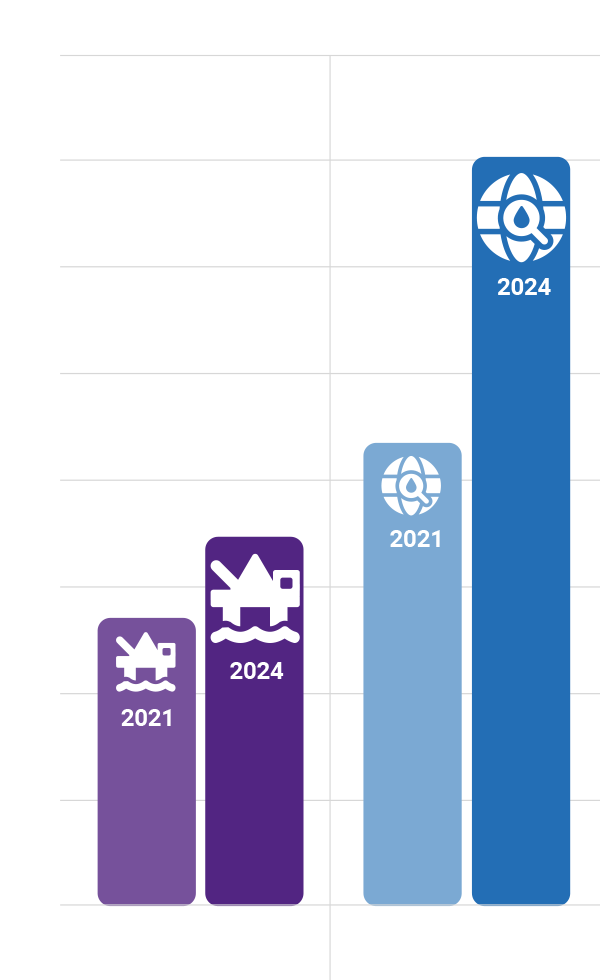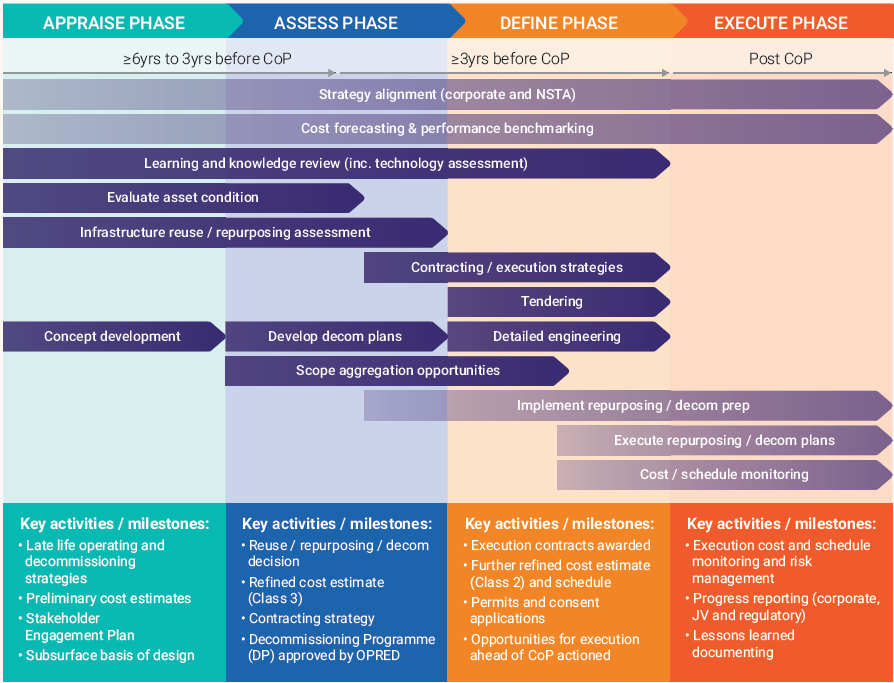Decommissioning is expensive, and it is getting even more expensive. Cost per platform well is up by a quarter since 2021, while cost per E&A well is up by over a half*. With clear regulatory expectations for cost-effective decommissioning set out in the North Sea Transition Authority’s Stewardship Expectations, the ability to manage, classify, and submit decommissioning information is essential.
Minimising Decommissioning Cost and Risk
Challenges to decommissioning planning include:
These issues can stall project timelines, increase costs, and compromise environmental and legal obligations.
Flare’s Approach: An Integrated Information Management Ecosystem
Sirus, Flare’s AI-supported Information Management platform enables decommissioning operators to quickly assess, categorise and tag their engineering data and documentation and physical archives, no matter in which system they sit, with minimal impact to their day-to-day operational activities.
Powered by the world’s most comprehensive energy industry taxonomy, the Sirus suite of Information Management tools includes MiNDR, which integrates artificial intelligence with an intuitive, user-friendly application designed to support the decommissioning process every step of the way.
MiNDR’s core components of Intelligent Search, AI-assisted automatic tagging and regulatory compliance monitoring support operators with:
Effective decommissioning is built on a foundation of trusted information.
Flare’s industry-leading IM solution allows operators to quickly and cost effectively assess, optimise, and exploit all the information available to them to support good decommissioning decision making, and reliable decommissioning plan delivery across all phases of the Decommissioning Glidepath.
Decommissioning is expensive. Cost per platform well is up by a quarter since 2021. Cost per E&A well is up by over a half*.

Managing Cost and Risk along the NSTA’s Decommissioning Glidepath
Flare Consulting has worked on some of the largest UK decommissioning projects, saving time and money for operators across every stage of the Decommissioning Glidepath.
We work with operators to:
- Prioritise the scanning of physical archives, delivering digital as-built and other critical documentation quicker
- Search across all online and archived content, to identify what is, and what is not available – helping to delineate project risks
- Organise and report documents needed to comply with current NSTA regulations, and future retention requirements

Our powerful search technology, built on the Sirus Platform, works across physical archives systems such as eSearch as well as online systems like Microsoft SharePoint and OpenText LiveLink, giving certainty through a single search box as to what information is already available, what needs to be scanned, and which boxes in the archives need to be pulled to access high value engineering and well documentation.
Managing post-decommissioning liabilities
Some asset documents must be preserved for years or decades after the asset itself has been dismantled. Using the Flare Taxonomies, Flare’s hand-curated energy industry knowledge graph, the Sirus Platform ensures that asset documents can be quickly and correctly classified and then assigned the appropriate retention codes – so only relevant records are stored for the long term, and only for as long as required.
Whatever your stage along the NSTA’s Decommissioning Glidepath, Flare Consulting can help.
Effective decommissioning is built on a foundation of trusted information
